Find a book

A Book a Month
We can send a book a month for six or twelve months - the perfect gift. More »

Café Music
Listen to our album of Café Music while browsing the site. More »

A parallel in pictures to the world of Persephone Books.
To subscribe, enter your email address below and click 'Subscribe'.
22 May 2019
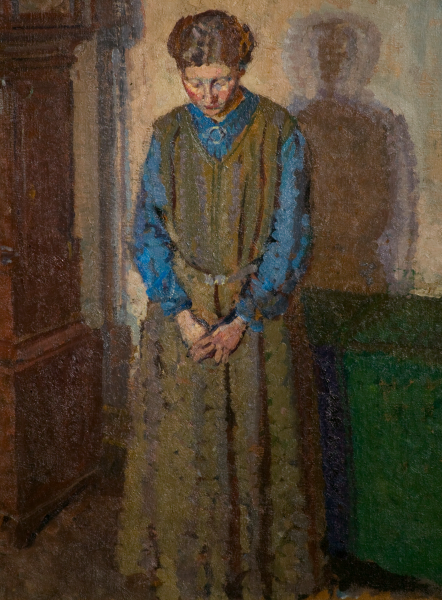
If Alas Poor Lady by Rachel Ferguson – which is about Victorian women who have nothing to do with their lives if they don’t manage to get married, so that Grace Scrimgeour in the book ends up in a lodging house – if it was ever a Persephone Classic (with a picture on the front) this would be the perfect cover. This is Meditation 1910-11, normally at Leicester. Do read the (always excellent) Persephone Forum about the book, here.
21 May 2019
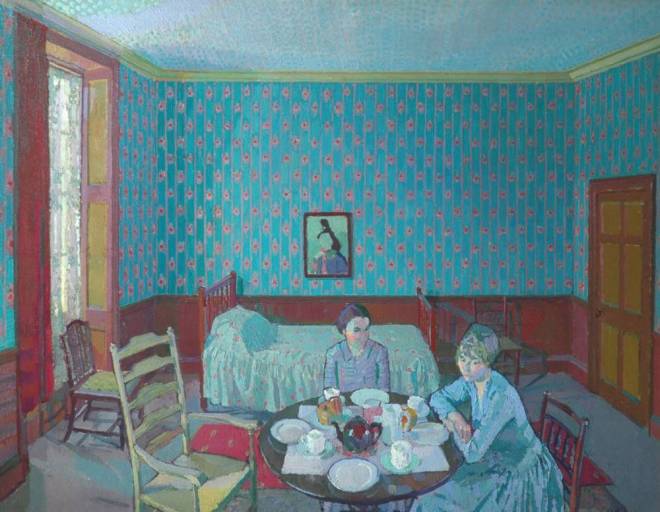
Tea in the Bedsitter is at Kirklees when not in Chichester. Gilman painted it in 1916. He would die three years later, aged 43, during the Spanish flu epidemic. Alastair Sooke wrote in the Telegraph that Gilman ‘ was one of the first cultural figures to depict that curious stratum of early 20th century British society and urban life: the shadowy, strangely isolating, perpetually shifting world of the boarding house and dingy bedsit, where disappointment, like dust, often hung thick in the air.’ (In fact, these two young women look pretty emancipated and as though they have gratefully escaped their families to come and live in ‘digs’.)
20 May 2019
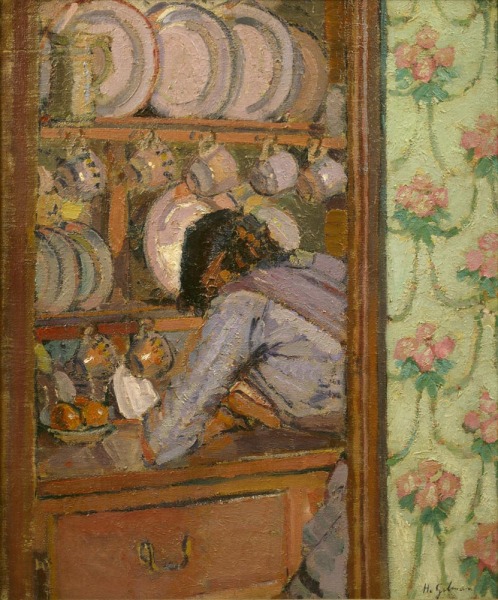
Harold Gilman: Beyond Camden Town is a new exhibition at the Pallant in Chichester: it runs until June 9th. ‘Harold Gilman (1876–1919) broke away from his contemporaries to produce a view of modern urban life in the early 20th century that was entirely distinct. He combined the gritty formality favoured by the Camden Town Group and his mentor Walter Sickert with the vitality of post-impressionism, with its thickly applied paint and vivid colours. Gilman’s subject matter and manner of painting were unusual bedfellows. His paintings infused scenes of everyday domestic life with a vigour clearly influenced by Vincent van Gogh and Edouard Vuillard [who will be the subject of the Post next week, because there is an exhibition just about to open at the Holburne in Bath]. His intimate depictions of domestic interiors captured a moment in time around the First World War when perceptions of gender, class and urban living were rapidly changing.’ ‘The Shopping List’ was painted in 1912.
17 May 2019
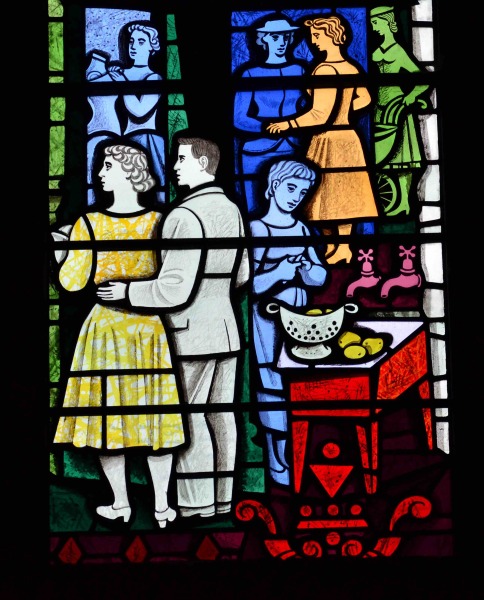
Finally, Harry Stammers again (he did The Parable of the Lost Coin that was on the Post on May 8th). Jane Brocket writes: ‘This is a detail of an east window in Christ Church, Wadsley, Sheffield 1957 which has lots of contemporary people e.g.. miner, farmer, typist, draughtsman, man with cart of vegetables… extraordinary.’ Indeed, all the domestic stained glass has been extraordinary. We shall return to it later in the year, maybe have a Harry Stammers week.
16 May 2019
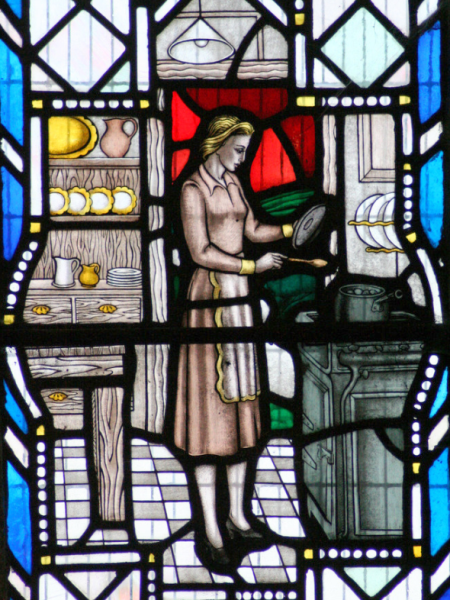
This is at St Stephen, St Stephen-in-Brannel, Cornwall, 1947, by George Cooper-Abbs (1901-66) for Wippell of Exeter. The two ovens look like an Aga but the top and the plate warming rack does not – so maybe the stove is a kind of hybrid cooker.
15 May 2019
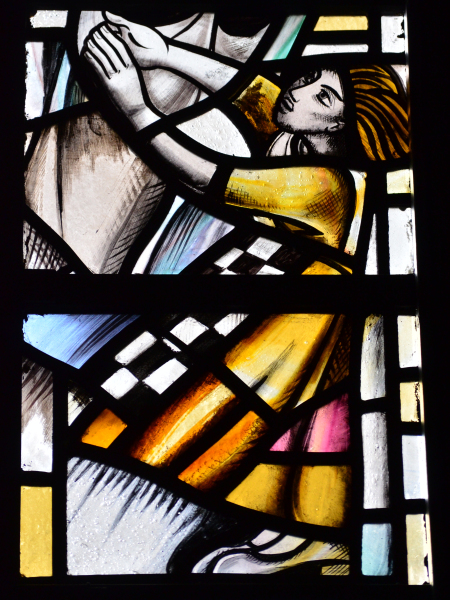
This window with a domestic subject is not in a church but in the staircase of an office building. It’s by William Wilson, 1939, and is a detail from the scheme in what was the Caledonian Insurance Company in Edinburgh. The building is now listed, here is more detail.
14 May 2019
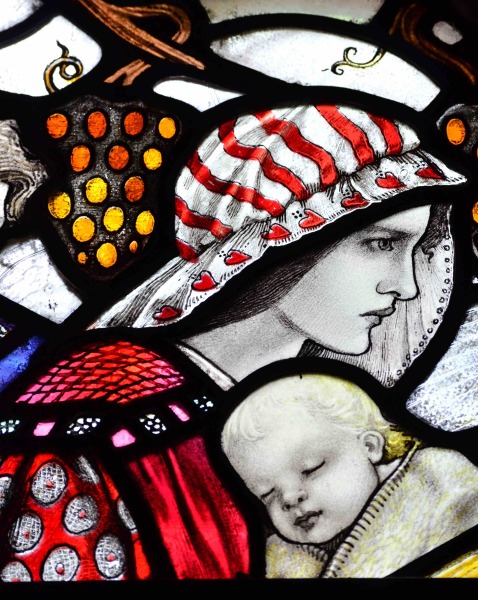
In one sense this is a classically beautiful 1912 Virgin and Child by Karl Parsons (1884-1934) at St Alban, Hindnead, Surrey. But look at the blanket stitch!
